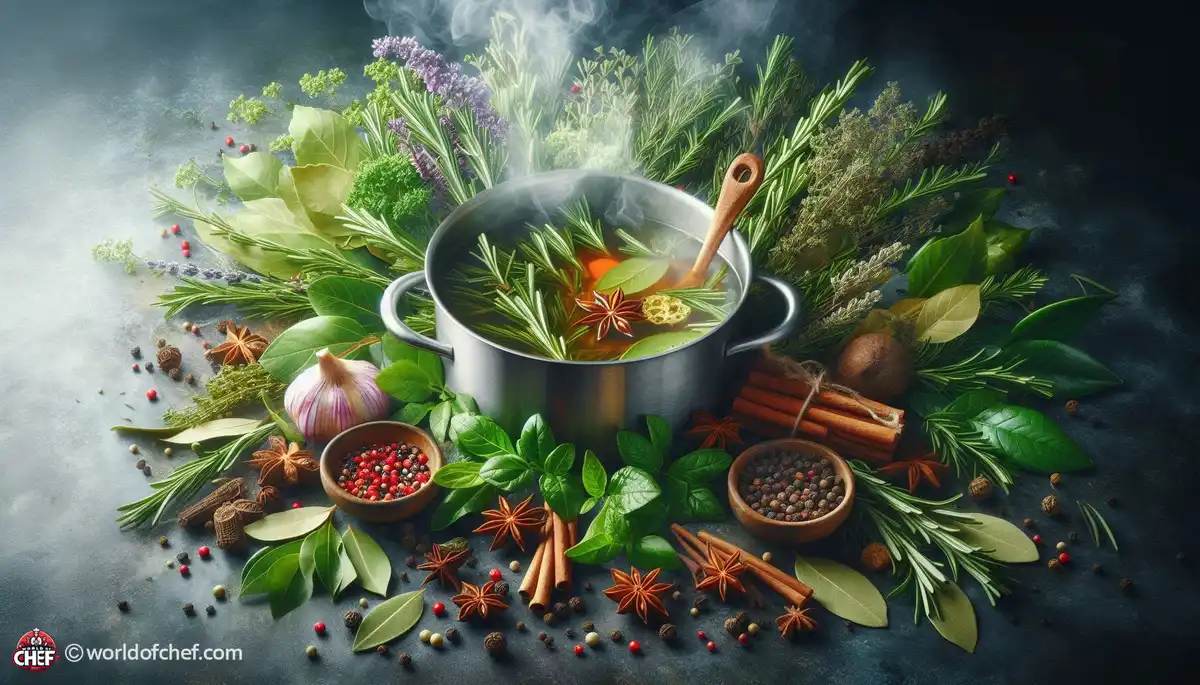
Simmering with Spices: Infusing Flavor into Your Dishes
Emery Donley - Oct 8, 2024 - 8 min read


Poaching is a tender cooking method that involves the submersion of food in liquid at low temperature. The practice has its origin for centuries and has gained popularity due to light proteins as in fishes and fowls. Poaching can be employed to enrich nearly everything, including fruits to vegetables. "Ultimately, the art and science of poaching lie in the injection of flavors, and perhaps the best way that flavors are enriched is by the formative use of herbs and spices.".
When you start a poaching adventure, you should begin with a good base. You may begin by choosing the right liquid base, whether it is broth, wine, or even water. Each has its subtle flavor, so choose one that will complement the ingredient you are poaching. For delicate fish, a light vegetable broth can provide a delicate backdrop, while robust meats may benefit from the complexity of a red wine reduction. Now that you have chosen your liquid, it is time to layer in some herbs and spices.
Poaching is all about balance. Avoid too many competing flavors that will overpower the dish. Instead, use a few well-chosen herbs and spices that enhance the background scents of the ingredients. Old favorites like dill, parsley, and lemon zest are great for fish - they add brightness and freshness without overpowering the delicate flesh. There's also thyme with bay leaf and garlic, perfect for chicken or vegetables: bringing out the flavor without being overpowered by the natural ones. There are so many herb and spice combinations, you may have to experiment with a few to know which one is best to your taste buds.
At one time, it is actually simplicity that is the first adjective I would associate with poaching. But there is the added bonus that you do get to really play boldly with flavors and spices so that even something as very basic as poached something can become an art de la table and delight everyone's senses and taste.
International Flavors can lift your poaching game: use star anise, ginger, and lemongrass for an Asian touch, or cinnamon, cumin, and coriander for a Middle Eastern one. The results will be full of depth and complexity-no ordinary poached fish.
Preparing custom spice blends is also another method to add flavors into your poached dishes. A mixture such as herbes de Provence, garam masala, or za'atar can give unique flavor profile to your poaching liquid, turning it into a fragrant broth that will bring out natural flavors in the ingredients. Don't be afraid to experiment and come up with the perfect blend for your palate.
Matching herbs and spices to ingredients is science and art. You are going to be able to create harmony needed to cook the perfect poached dishes singing with complexity and depth only when you understand how flavours combine.
Choose herbs and spices that cut through the richness of your ingredient, if you're dealing with something like oily salmon. If you're poaching salmon, lemon balm or tarragon will cut through the fatty richness of the fish, as will black pepper or chili flakes to add a bit of heat.
Similarly, when Poaching Chicken, a milder flavor allows you to play more freely with herbs and spices used. You can add quite strong flavors of rosemary, thyme, or paprika in the flesh to give the meat all the depth and complexity possible. Feel free to try mixing and matching different herbs and spices for an eclectic flavor combination that would marry well with what you have on hand.
While poaching is relatively simple to cook, there are a few tips and tricks that ensure success every time.
When poaching, it's essential not to let the liquid be too hot. If you overheat, food dries out and cooks almost to a boil. Poach at a gentle rolling simmer.
Another important aspect of successful poaching is timing. Ingredients cook at different times, so make sure to adjust the cooking time according to the ingredient. For instance, delicate fish may only need a few minutes in the poaching liquid, while tougher cuts of meat may require longer cooking times to become tender and flavorful.
Finally, do not forget to season your poaching liquid. Salting and peppering the liquid may enhance the flavors of your ingredients, so that when you have finally put your dish together, it will not lack in flavor. You should taste the liquid before adding your ingredients and make adjustments in seasoning for perfect balance.
Poaching is one of the most versatile cooking techniques in which flavor can be added to almost all types of ingredients. So that you can raise your simple poached dishes to sublime, you have to wisely choose herbs and spices in order to create meals not only delicious but also ravishing. Whether you're a seasoned chef or still a novice cook, just try out various flavor mixtures and techniques to unravel the full potential of the poaching technique and therefore take your culinary skills on a new height. So the next time you're in the kitchen, do not be afraid to be a little creative and explore that wonderful world of poaching. Your taste buds will thank you!

Emery Donley - Oct 8, 2024 - 8 min read

Russell Comeaux - Oct 8, 2024 - 8 min read

Walter Backus - Oct 7, 2024 - 8 min read

Samantha Thames - Oct 7, 2024 - 6 min read